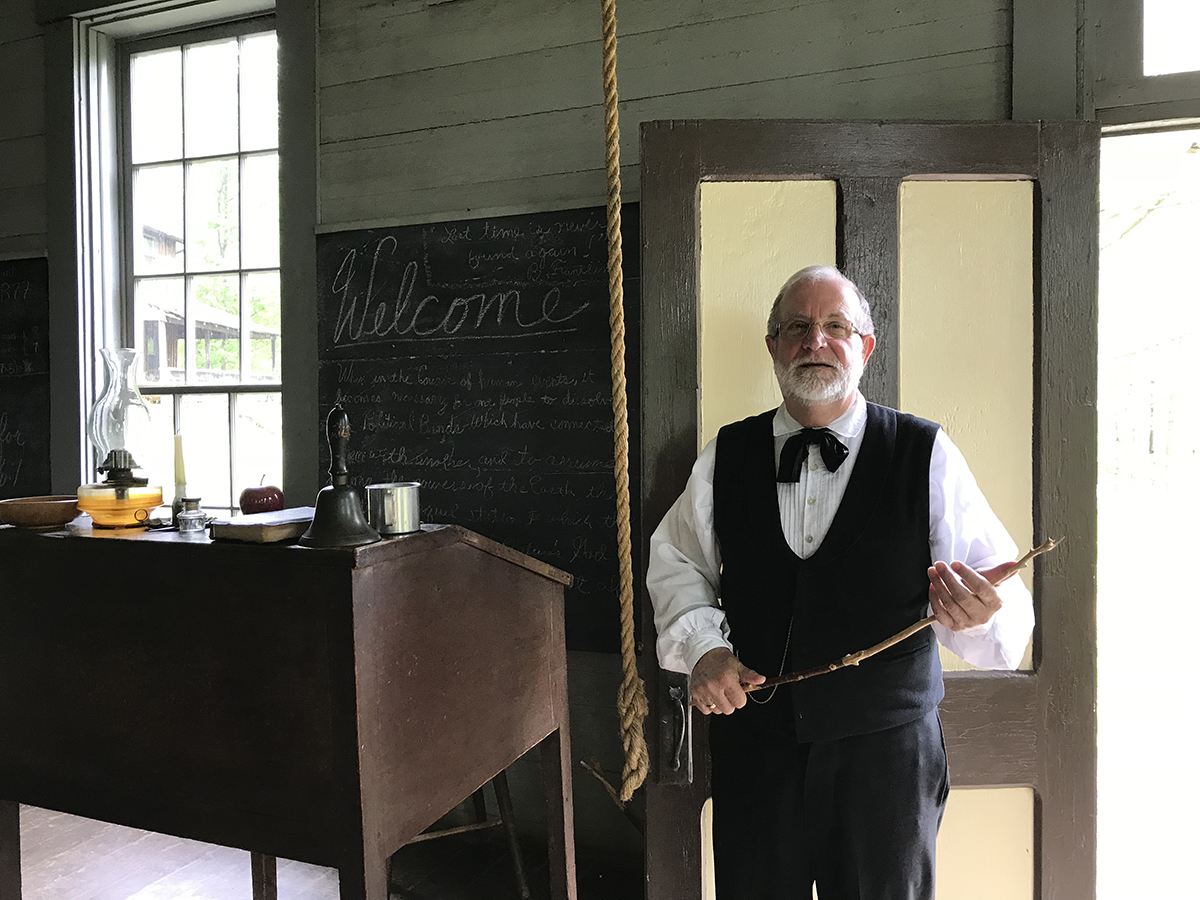Visitors to Meadowcroft Rockshelter and Historic Village are transported back in time as they learn about rural life in Western Pennsylvania throughout the centuries. Historical interpreters are integral to bringing history to life in Meadowcroft’s 16th-century Monongahela Indian Village, 18th-century Frontier Trading Post, and 19th-century Meadowcroft Village.

Interpreter Gary Ford, a retired school teacher, spends most of his time as an 1800s schoolmaster inside the one-room schoolhouse in Meadowcroft’s 19th-century village. He also spends time interacting with school groups in the Monongahela Indian Village and dipping candles in the King House.
Now that Meadowcroft’s 50th season has ended, we caught up with Ford to learn what it’s like interpreting history for visitors from around the region and around the world.
1. How did you first get involved at Meadowcroft?
My wife was a volunteer for the Heinz History Center and during the annual Heritage Weekend in September at Meadowcroft. I had never been to Meadowcroft, so I went and stayed the day. I liked it so much that I decided that after I retired, I would apply for a position and as they say, the rest is history. I have been working [at Meadowcroft] every year since 2015.
2. What do you enjoy most about being an interpreter?
I have to admit, I enjoy the school kids the most. I enjoy being the schoolmaster in the 1880s one-room schoolhouse and showing them what it would be like to go to school back then. I greet them and then explain that when they walk through the school door it is no longer 2018, but it is now 1880, and their faces light up. They are eager to hear about the lessons, lunch, recess, and of course, the “hickory stick” discipline.
The laughs that come when one of their friends is whacked with a hickory stick are loud and long. Plus when the girls, as punishment, have to hold books and boys have to wear girls’ bonnets, well, you cannot imagine how loud the laughter is. When the boys, who have volunteered to participate, see the bonnets come off the pegs, they sometimes wish they had not agreed to help… We should be able to sell that kind of joy and laughter because it is priceless. (OK, it is fun to also put adults in these same situations, but the kids are the best.)
3. What’s one of the most interesting things you’ve learned through your role?
I think it is the vision that Albert and Delvin Miller had when starting Meadowcroft. They began moving the buildings in place for the 1800s village in the early 1960s, and it opened to the public in 1969. The dig at the Rockshelter did not start until 1973. I just wish I would have had the opportunity to meet and talk to them.
4. What are visitors typically surprised to learn when they interact with you?
I think they are surprised at the quality of the exhibits and the professionalism of the interpreters. The most common complaint I hear from folks is that they did not allow for enough time to see everything.
5. Why do you think it’s valuable for people to visit sites like Meadowcroft?
I would go back to what I call the “mission statement” of Albert and Delvin Miller. They wanted to show school groups, scouting groups, and young people what it was like to live in the various time periods. They wanted the kids to know about their ancestors and how difficult it was for them to live.
Stay tuned to the Discover Meadowcroft blog for more Q&As with interpreters!
Kim Roberts is the communications coordinator at the History Center.
